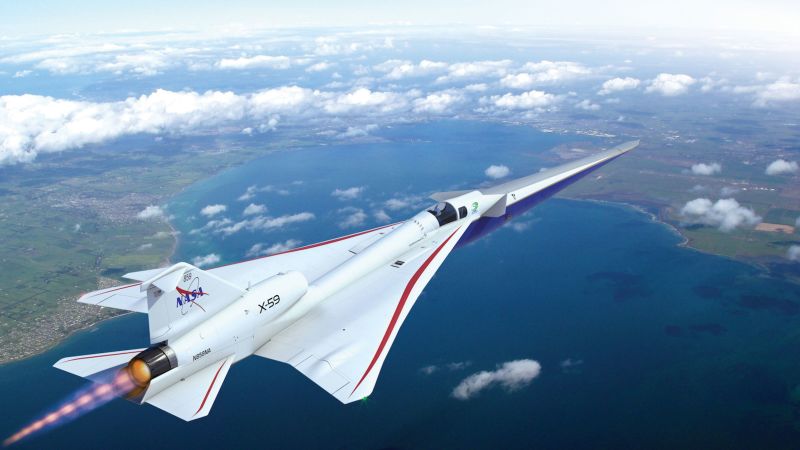In July, Lockheed Martin completed the build of NASA’s X-59 test aircraft, which is designed to turn sonic booms into mere thumps, in the hope of making overland supersonic flight a possibility. Ground tests and a first test flight are planned for later in the year. NASA aims to have enough data to hand over to US regulators in 2027.



yeah i experienced a sonic boom once, obama came to seattle and a small private plane accidentally entered the restricted airspace, that was one too many. even if its lessend its not gonna be pleasant to be under.
They’re promising a perceived 75 dB level, equivalent to the volume of a dishwasher. Sonic booms are normally about 110 dB or about a jackhammer or a rock concert
And it’s not like you’d hear it all the time, just once in a while and only if you’re in the flight path.
will it reduce the air pressure difference on the ground? i was in a building and it moved. i felt it. sound is only one problem.
https://www.nasa.gov/centers/dryden/pdf/120274main_FS-016-DFRC.pdf
Yes, they would reduce the overpressure. By how much I’m not sure, but that’s part of the research.
I guarantee it will be louder than that. Unless the flight path is directly over a senator’s house or an historic golf club (where donors play), it will be too loud.
Literally make the flight path over the richest part of town or I won’t believe it.
NASA has no control of flight paths. The FAA also doesn’t specify sonic-boom allowed flight paths. They just outright ban it (with a few exceptions) for any boom that could reach anywhere in the US.
FAA also doesn’t want to deal with people complaining about sonic booms like they did back in the 50s when this all started (they received tens of thousands of complaints) so they have an interest in making sure NASA lives up to their promises.